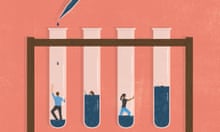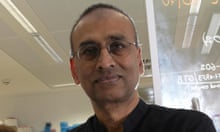Scientists say they are closer to pinning down the genetic causes of inherited diseases ranging from muscular dystrophy to certain types of heart disease after analysing the DNA of more than 60,000 people.
Researchers have discovered more than 3,000 genes in which certain mutations are likely to play a role in disease, as well as more than 160 genetic mutations that have previously been linked to inherited conditions - but are in fact harmless.
The findings will help to pin down whether genetic mutations seen in a patient are likely to be behind their disease.
“Researchers and clinicians need to be able to determine which DNA changes are important [in their patients],” said Dr Jane Gibson from the University of Southampton, who was not involved in the study. “Has a particular change been seen before in healthy individuals? This helps to prioritise the [genetic] changes and narrow down the likely cause of disease in their own patient.”
The new research is based on regions of DNA that encode information needed to make proteins – regions that account for just under 2% of the entire human genome.
“Those protein coding regions contain the vast majority of the [genetic] variants that are known to cause severe rare diseases like muscular dystrophy,” said Daniel MacArthur, senior author of the research from the Broad Institute of MIT and Harvard. “So focusing on those regions really gives us a lot of bang for our buck in terms of understanding the genetic causes of severe diseases.”
The research is the fruit of an international collaboration, dubbed Exac, which pulled together data from around the world to produce the largest ever catalogue of variations in protein-coding regions of DNA, boasting data from 60,706 individuals.
Among their findings, the scientists discovered almost 7.5million genetic variants in the database. “More than half of those are seen only once in 60,000 people - that’s an incredibly rare frequency,” said MacArthur, adding that most of the mutations identified have never been seen before.
As well as highlighting the high degree of variation among humans, the finding has important implications. “These extremely rare variants are the ones that are most likely to be involved in very severe diseases like cystic fibrosis or muscular dystrophy,” he said.
The research also revealed that there are 3,230 genes which have fewer genetic variations that would inactivate the gene than expected, meaning that many of these genes are likely to be involved in essential processes in the cell. That, the scientists add, means that disruptive genetic mutations in these genes are likely to have adverse effects - although such impacts are at present unknown for more than 70% of these genes. “We know of some of the genes in the list already where gene disruptions cause very severe childhood onset diseases,” said MacArthur.
The team were also able to overturn a number of links previously made between particular genetic mutations and a host of disorders, finding more than 160 genetic variants that had erroneously been linked to inherited conditions.
“Surprising findings like these allow us to get a better understanding of how the human genome works and how different changes might or might not affect our health,” said Gibson.
While the Exac database has been freely available for use in clinical settings since late 2014, the new research, published in the journal Nature, marks the first analysis of the data.
By using the database to work out how common a patient’s genetic variant is, and comparing it to how common the patient’s disease is, researchers hope to be able to screen for disease-causing mutations.
“If [a particular genetic variant occurs in] one in every 6,000 people, it cannot be a fully causal variant for a disease that [affects] one in 100,000,” said MacArthur.
Ewan Birney, co-director of the European Bioinformatics Institute in Cambridge says the Exac database is extremely important. “Previously there would be a sense that if you had breast cancer, and you had a rare mutation in [genes known as] BRCA1 or BRCA2, then perhaps that rare mutation was the reason you got breast cancer,” he said. “We can now say for many of those variants, it is rare but it is not so rare and so it probably doesn’t cause breast cancer.”
In a separate study by researchers from the Royal Brompton Hospital and the University of Oxford, scientists describe how they used the Exac database to whittle down the number of genetic mutations linked to cardiomyopathy - diseases of the heart muscle that affect one in 500 people in the UK and are the most common cause of sudden death in young people who are otherwise in good health.
Published in the journal Genetics in Medicine, the researchers reveal how they compared genetic information from almost 8,000 patients to genetic variations found in the Exac database. The team found 40 of the 48 genes previously linked to one form of cardiomyopathy - and a third of the genes linked to another form - were unlikely to cause the disease.
As well as increasing the accuracy of diagnosis, the findings are expected to be valuable for testing family members of those who have been diagnosed with an inherited disease. “When a mutation is identified you can cascade it around the family and you can say to other family members you are also at risk, ” said Birney.
While the Exac database includes genetic information from individuals of many different ancestries, including Latino, African and East Asian, there are other populations, including those of Central Asian ancestry that are missing from the dataset.
“For Europeans now we have this database that really helps to screen out what ends up being benign mutations,” said Birney. “We need that now for all populations.”









Comments (…)
Sign in or create your Guardian account to join the discussion